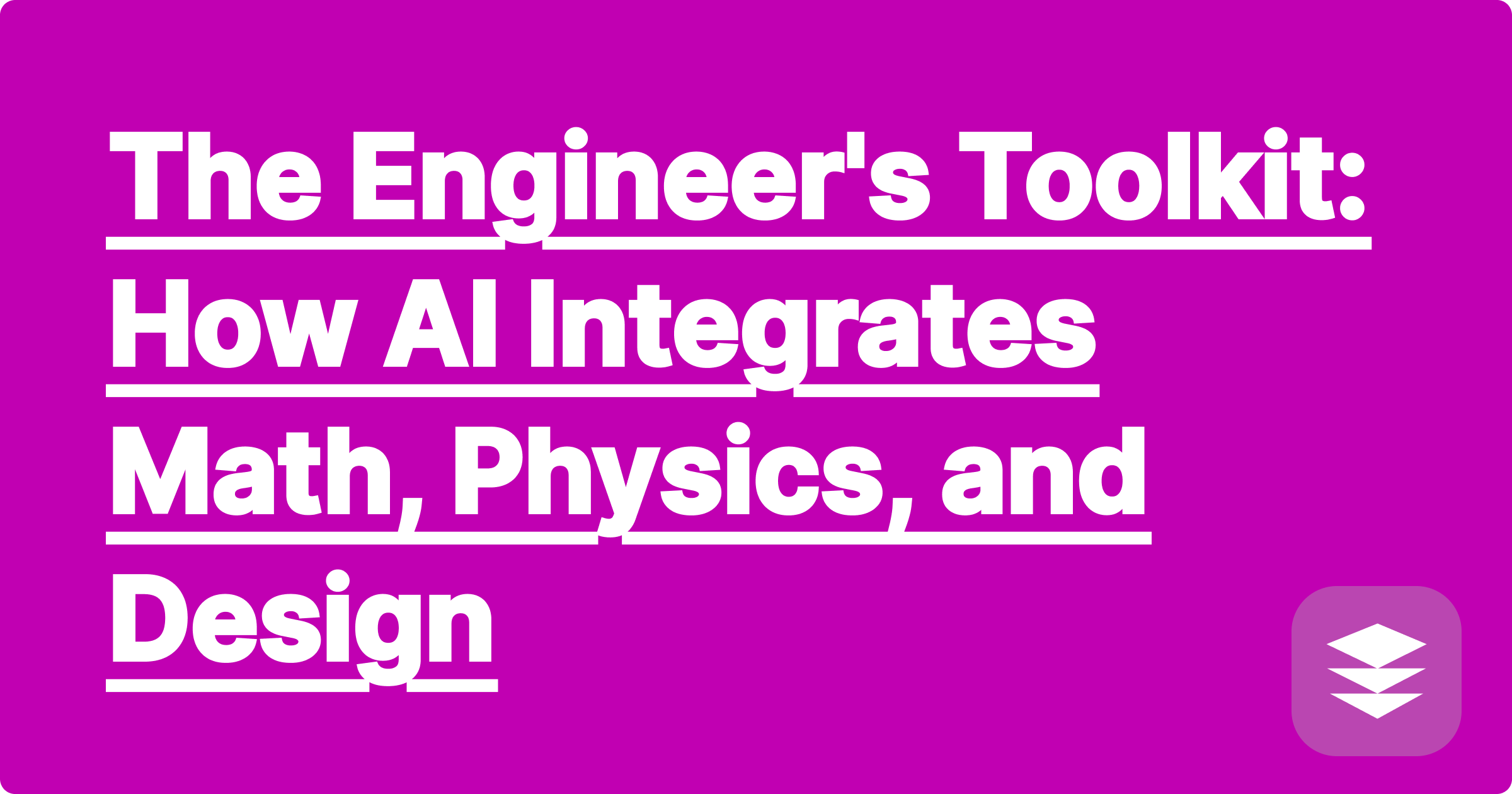
In your first year of engineering, the world is neatly divided. You have your calculus class, your physics class, your materials science class, and your intro to CAD class.
Each subject lives in its own silo. But then, you hit your junior or senior year, and you're assigned a capstone design project: "Design a gearbox for a small electric vehicle."
Suddenly, the silos are gone. To solve this one problem, you need to:
This is integrated STEM learning in action, and it's where many students feel overwhelmed. How do you connect the knowledge from four different classes to solve a single, complex problem? The answer lies in using AI as your universal translator and integrated project manager.
The main difficulty of a capstone project isn't that any single part is impossible; it's the sheer number of connections you have to make.
You need a central hub, a digital toolkit that can speak all of these languages.
A suite of AI tools like GPAI Solver and GPAI Cheatsheet is uniquely designed to serve this integrative role. They are essential tools for mechanical engineering students precisely because they aren't limited to a single subject.
Here’s how you can use AI to manage an integrated design project:
Before you begin, create a single source of truth for your project.
As you work through the design, use the solver to tackle the calculations from different disciplines.
[Image: A diagram showing icons for Physics, Math, and Coding all pointing towards a central GPAI Solver icon, which then outputs a final engineering design blueprint. Alt-text: A visual showing how AI tools for mechanical engineering students enable integrated STEM learning.]
"For my capstone project, I had to design a heat exchanger. I used GPAI Cheatsheet to pull all the relevant formulas from my Thermodynamics and Fluid Mechanics notes into one sheet. Then, I used GPAI Solver to do the heat transfer calculations and also to write a small Python script to model the fluid flow. It felt like having a whole team of specialists for a TA."
This is how modern engineering work gets done. It's collaborative and multi-disciplinary. Using AI in this way doesn't just help you get a better grade; it prepares you for how you will actually work in your future career.
A: Yes. A large language model's greatest strength is its ability to find connections and patterns across vast domains of information. When you provide it with the context of your specific project and notes, it can seamlessly switch between calculating a bending moment (physics) and suggesting material properties (materials science).
A: It's an incredible tool for collaboration. The "Project Bible" created with GPAI Cheatsheet can be shared with all group members, ensuring everyone is working from the same information. When one member is responsible for the analysis and another for the CAD model, they can use the AI to quickly share calculations and assumptions, ensuring the whole project stays in sync.
A: Absolutely. Proficiency in CAD software (like SolidWorks or Fusion 360), a good programming environment (like MATLAB or Python with scientific libraries), and FEA software are all critical. Think of the GPAI Suite as the "glue" that connects the work you do in all of these other specialized tools.
The most successful engineers are not just specialists in one area; they are systems thinkers who can integrate knowledge from multiple disciplines to solve a single, complex problem. Using AI as your integrated toolkit is the best way to start developing that mindset right now.
Ready to build your complete engineering toolkit?
[Try the GPAI Suite today. See how it connects your knowledge across subjects to help you succeed in your most challenging projects. Sign up for 100 free credits.]
Why Mechanics of Materials is All About Free-Body Diagrams: An AI Approach
Fluid Mechanics Homework: Solving Navier-Stokes with an AI Assistant
From Theory to CAD: How AI Can Help You Visualize 3D Designs
Master Heat Transfer: An AI Tool for Conduction and Convection Problems
Your Ultimate Guide to Surviving Dynamics: From Kinematics to Vibrations
How to Write a Professional Engineering Lab Report with AI-Assisted Analysis
The Smartest Way to Create a Machine Design Formula Sheet
Control Systems Explained: Using AI to Understand Laplace Transforms and Bode Plots
Why Did My Finite Element Analysis (FEA) Fail? An AI Debugging Guide
The Engineer's Toolkit: How AI Integrates Math, Physics, and Design